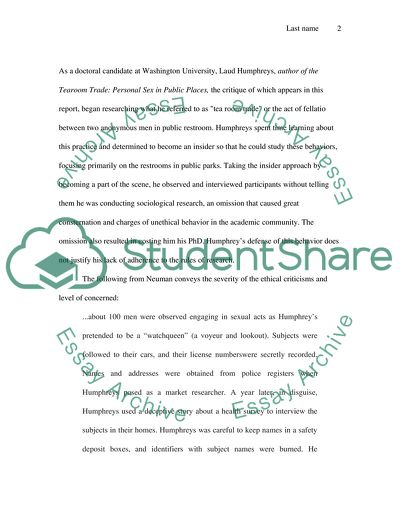Cite this document
(Personal Sex in Public Places by Laud Humphreys Book Report/Review, n.d.)
Personal Sex in Public Places by Laud Humphreys Book Report/Review. https://studentshare.org/literature/1740318-critical-book-review-on-humphreys-l-1970-tearoom-trade-chicago-aldine
Personal Sex in Public Places by Laud Humphreys Book Report/Review. https://studentshare.org/literature/1740318-critical-book-review-on-humphreys-l-1970-tearoom-trade-chicago-aldine
(Personal Sex in Public Places by Laud Humphreys Book Report/Review)
Personal Sex in Public Places by Laud Humphreys Book Report/Review. https://studentshare.org/literature/1740318-critical-book-review-on-humphreys-l-1970-tearoom-trade-chicago-aldine.
Personal Sex in Public Places by Laud Humphreys Book Report/Review. https://studentshare.org/literature/1740318-critical-book-review-on-humphreys-l-1970-tearoom-trade-chicago-aldine.
“Personal Sex in Public Places by Laud Humphreys Book Report/Review”. https://studentshare.org/literature/1740318-critical-book-review-on-humphreys-l-1970-tearoom-trade-chicago-aldine.


